The Modern Jive Timeline
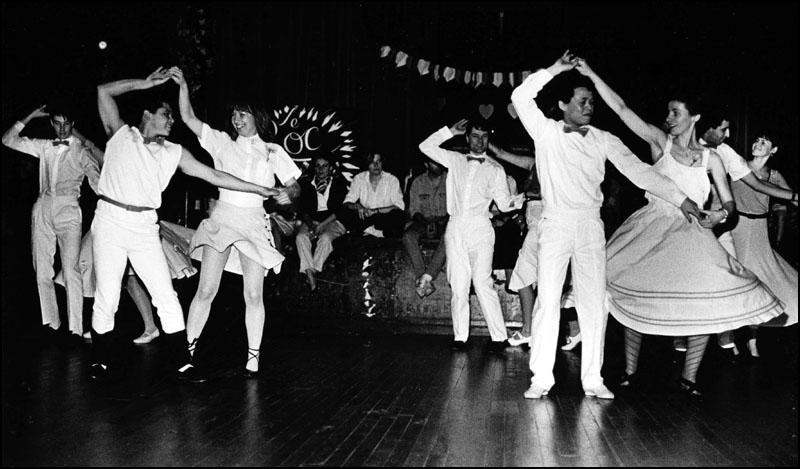 |
||
|
The Le Roc Dance Troupe, performing on Valentine's Day 1985 at
the Notre Dame Hall (which in those days had an entrance from the
Charles Peguy Centre).
From left to right the dancers are John Reid and unknown partner, Roger Chin and Sabine Funel, Danny Evans and Diana Syrat, Michel Ange Lau and Claude Faudot, Simon Selmon and Natalie Baekeroot. |
|
The material below is from many sources: interviews, personal correspondence, material I have collected over many years, Web sites (listed at the bottom), etc. There may be some inaccuracies. For example one of my sources said that there were 30 people at the first Ceroc night in 1980, another said there were 80 people! If you can help with corrections, additions, facts, dates, reminiscences, images or anything else, then please get in touch with me at john@modernjive.com. |
What's in a Name?LeRoc (or Le Roc or Leroc or LEROC or le roc or any other spelling) is a generic name for Modern Jive. "Ceroc" has been registered as a trademark in many countries. In the UK:
The LeRoc Modern Jive Federation is a group of independent dance teachers. While many Federation clubs use the word LeRoc in the name of the club, there are clubs in the Federation that do not. There are also clubs that do have LeRoc in their name but are not members of the Federation. The dance has often been referred to as French Jive, acknowledging its French roots, but the dance has changed so much from those roots that the term has fallen out of general usage. In the Beginning"I danced in the morning when the world was begun." Time passed... 1939-1945Americans GIs brought swing music and dancing to Europe (see The History of Jive). 1945-1970Swing became the Be Bop to very fast music in the cellars of Paris. Jive, Rock ‘n‘ Roll, Boogie Français, Boogie Woogie and Le Bop developed. You can still do Paris Swing in jazz cellars in Paris such as Caveau de la Huchette. Try Danse-a-2 if you are travelling there. 1970sFrance saw an evolution of partner dancing, a sort of casual Rock ‘n’ Roll with little footwork, passed on socially, by imitation, rather than in dance classes. James Cronin learnt the French style on visits to his French grandmother; it was a social partner dance that was a hybrid of American swing and jitterbug. Christine Keeble won a dance competition in France and looked for the French dance style in the UK. 1977Michel Ange Lau first saw the French Le Bop style at the Centre Charles Peguy (a French Youth Centre) in London. Both the Notre Dame Hall and the Centre Charles Peguy were owned by the French Notre Dame Church, and were run by a French Trust. The Trust's accountant was reputedly a great French Rocker! 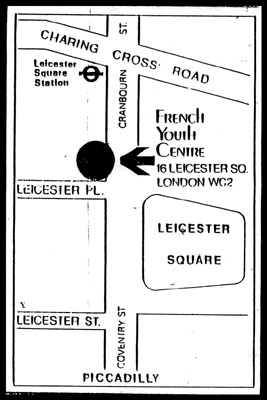
1978Michel Ange Lau started teaching at the Centre Charles Peguy, and developing Le Roc. 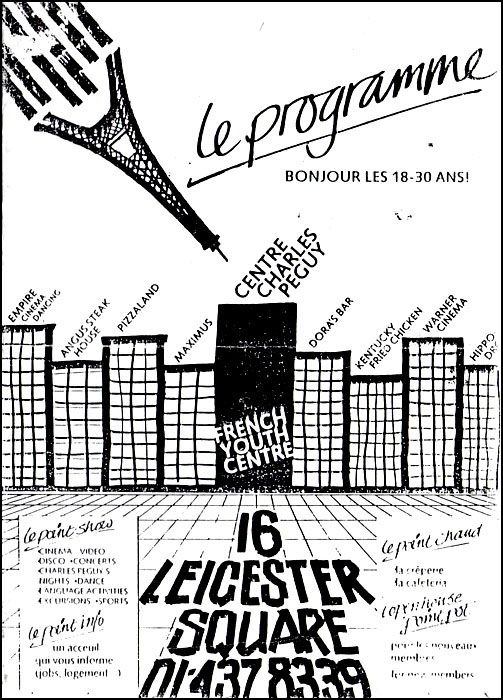
See Michel's account of "The History". 1980James Cronin launched the first ever Ceroc night in London in January. James, his brother and a friend came up with the name "Ceroc" when they were planning for that first dance night in London in January 1980. "Ceroc" is short for "C'est le Rock" which is French for "It is rock". The French called their dance Rock from the American Rock ‘n’ Roll. James Cronin attended some of Michel Ange Lau’s classes at the Centre Charles Peguy. The early Ceroc nights did not provide formal dance lessons. It was just a monthly dance, but the Ceroc cabaret team members and other keen dancers gave individual tuition. 1982James Cronin employed Michel Ange Lau to choreograph a routine for the November 1982 Ceroc Ball, a charity event at the Hammersmith Palais that attracted 1200 people. This routine was performed to "Gold Bug", and the moves recorded for the first time. "Gold Bug" is from "The Turn of a Friendly Card" by the Alan Parsons Project. 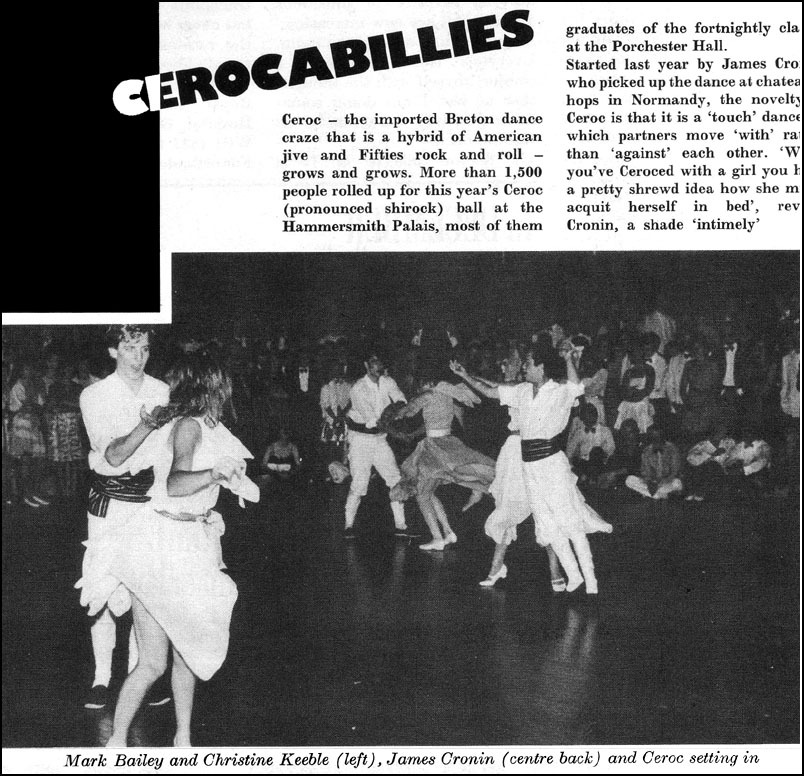
Ceroc gets national publicity for first time: The November 1982 Ceroc Ball in Harpers & Queen.
Copyright Harpers & Queen. 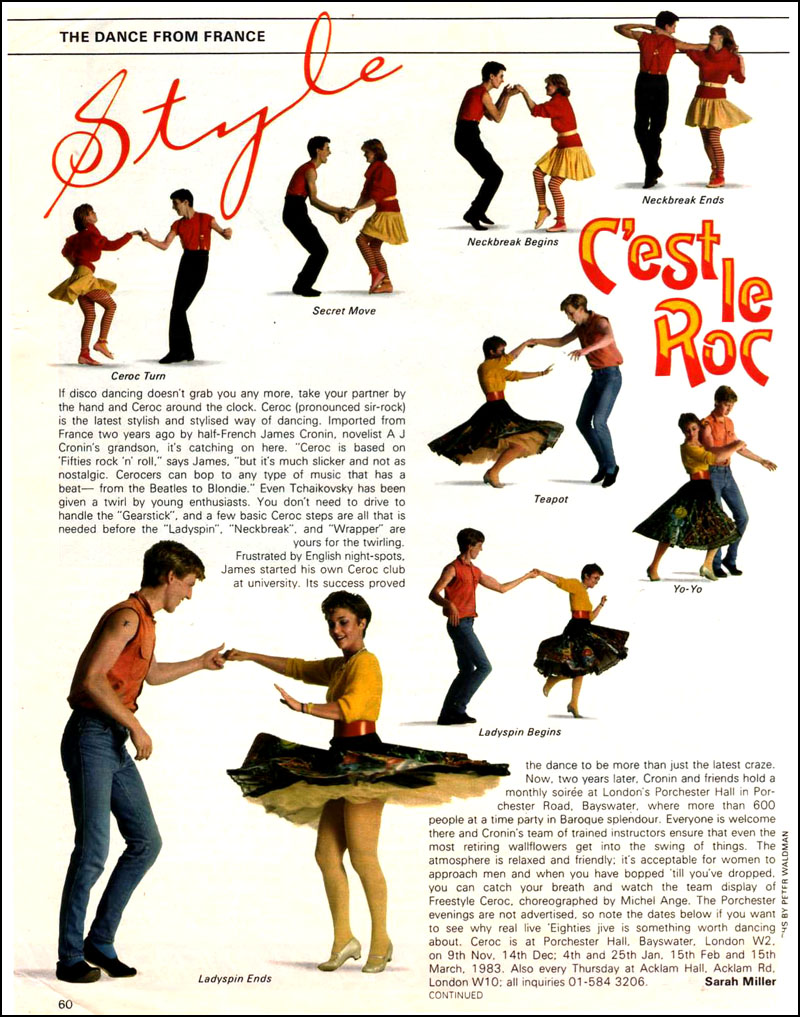
From the November 1982 issue of Cosmopolitan magazine.
Katie Orr & Richard, Christine Keeble & Mark Bailey. Copyright Cosmpolitan. 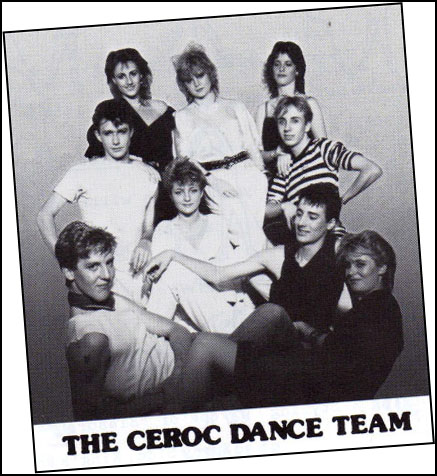
The 1982 Ceroc cabaret team hits London Night Clubs.
Top row: Serena, Yum Yum Norman, Janie Cronin (née Janie Elton) Middle row: James Cronin, Christine Keeble, Paul Bottom row: Mark Bailey, Richard, Katie Orr Christine Keeble: "Gosh don't we all look juvenile! I'm the one in the middle with the short hair. Which nightclubs? Definitely the Hamersmith Palais on separate occasions and the Camden Palace twice (which was the scariest place on earth - about 5,000 punks, new romantics & trendies). Loads of small nightclubs but cannot remember names." James's vision for the dance (under the Ceroc banner), combined with Michel's innovative flair, produced a new kind of partner dancing to modern music sounds. 1983Ceroc moved to the Pineapple Dance Studios in Covent Garden where it was taught four times a week. Michel Gay learnt at the Pineapple Dance Studios from James Cronin. Michel Gay founded Ceroc Bristol; he later changed the name to Bristol LeRoc. Janie Elton (later Janie Cronin) took over as Ceroc choreographer. Roger Chin attended Michel Ange Lau’s classes. Michel Ange Lau and Christine Keeble (one of the Ceroc cabaret team members), set up the Le Roc club in London, and taught at the Centre Charles Peguy. A committee of devotees organised the regular dances in Notre Dame Hall under the Le Roc banner. Two top DJs were Simon Selmon and John Reid. Other tasks were divided among committee members to make it a very successful club. 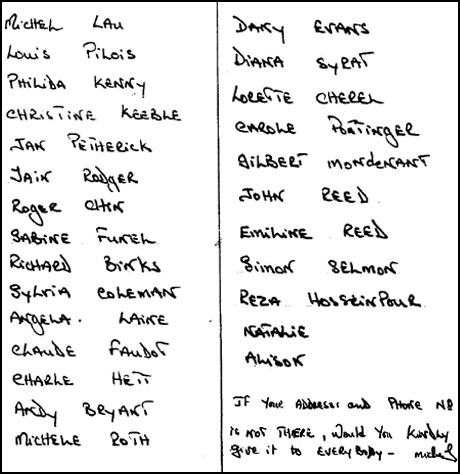
The founders of Le Roc.
(Edited to remove addresses and phone numbers.) 1984Angelique Meyer (founder of Ceroc New Zealand) went to Ceroc classes taught by Janie Elton at the Pineapple Dance Studios. The Ceroc Charity Ball attracted 1700 people. The Le Roc Dance Troupe was formed. Le Roc Dance Troupe was invited to perform for the French Ambassador at the 14th of July Bastille Day Celebration Ball at the London Novotel. 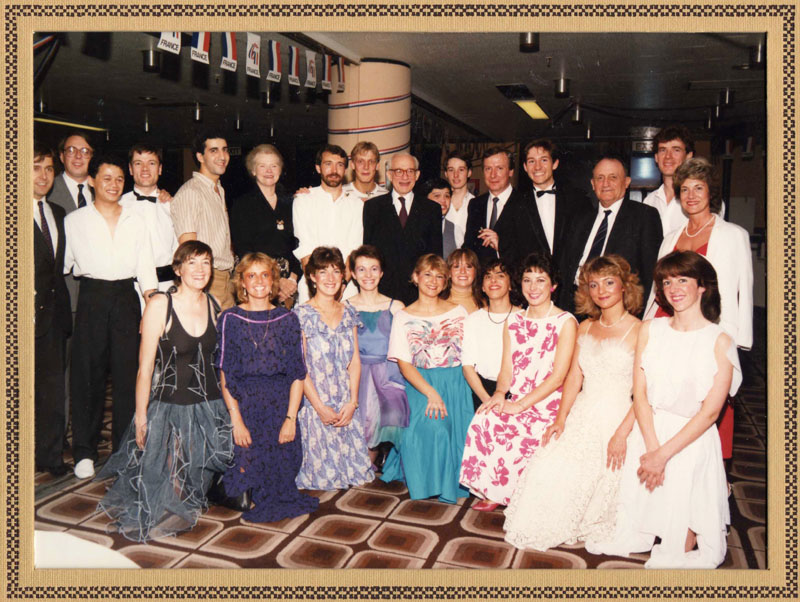
Le Roc Dance Troupe at the French Ambassador's Ball.
Top row from left to right: VIP, VIP, Michel Lau, Danny Evans, Simon Selmon, VIP, Richard Binks, Gilbert Mondehard, the French Ambassador, Roger Chin, John Reid, VIP, Dominique Corroleur, VIP, Iain Rodger, VIP. Bottom row from left to right: Diana Syrat, Angela Laine, Penny Nickells, Claude Faudot, Jan Petherick, Sabine Funel, Lorette Cherel, Carole Pottinger, Christine Keeble, Sylvia Coleman. The Le Roc and Ceroc cabaret troupes performed in nightclubs and at balls all over London, promoting the dance through the 1980s. 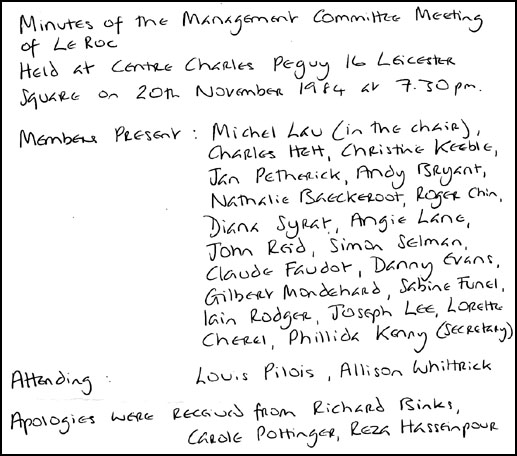
The Le Roc Commitee as at November 1984.
1985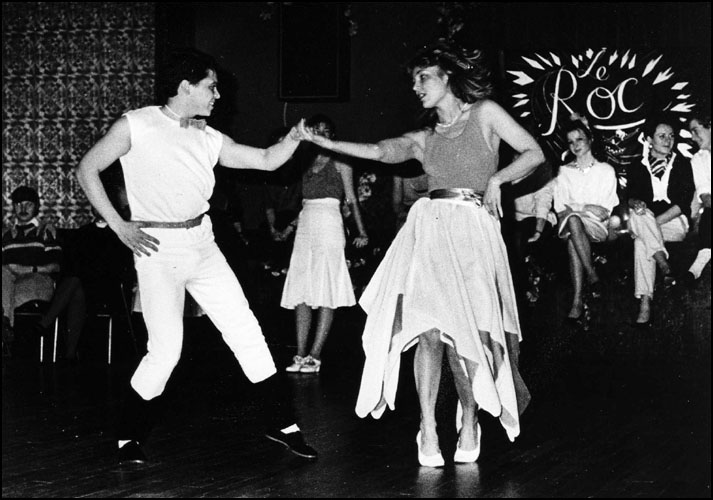
Roger Chin and Christine Keeble - Valentine's Day, 1985.
1986Sylvia Coleman opened a weekly Ceroc night in a Central London nightclub. Roger Chin started running independent freestyles in London: 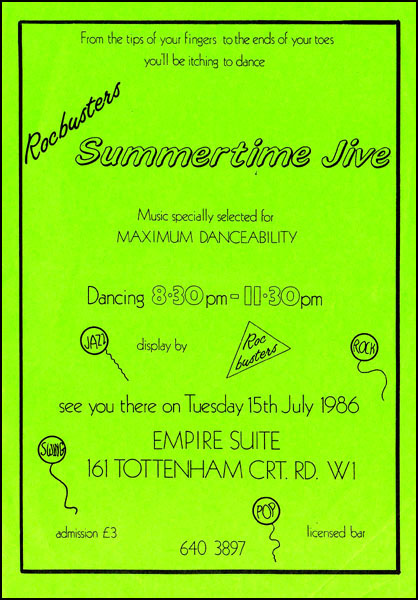
1987James Cronin and Sylvia Coleman formed a business partnership. Dance classes were combined with freestyle sessions to create the "Ceroc formula". Throughout this period Ceroc stylised the dance a bit more so that it became more modern. Roger Chin started Cosmopolitan Jive in London. Nicky Haslam (founder of Ceroc Pty Ltd in Australia) started as a beginner with Janie Cronin at Pineapple Dance Studio.
Nicky Haslam:
"I started as a beginner in 1987 with Janie Cronin at Pineapple Dance Studio and with
James Cronin at Busby’s nightclub Tottenham Court Road. As well as moving up to being
a demonstrator (wow!) for James Cronin I was also involved in the first LeRoc
choreographed team routine performed at the LeRoc Ball in Notre Dame Hall,
Leicester Square. Our Choreographer was Roger Chin and my dance partner was
Simon de Lisle - I remember the piece we did was "Hernando’s Hideaway". Wow...
great memories from those early days. I can also remember performing demos with
the Ceroc crew on the cobblestones in Covent Garden - I still have it on video
being dropped on my head in front of approx 200 bystanders on those cobblestones... ouch!"
1988Angelique Meyer founded Ceroc New Zealand). The first class was in Auckland in September. See Bringing Ceroc to New Zealand 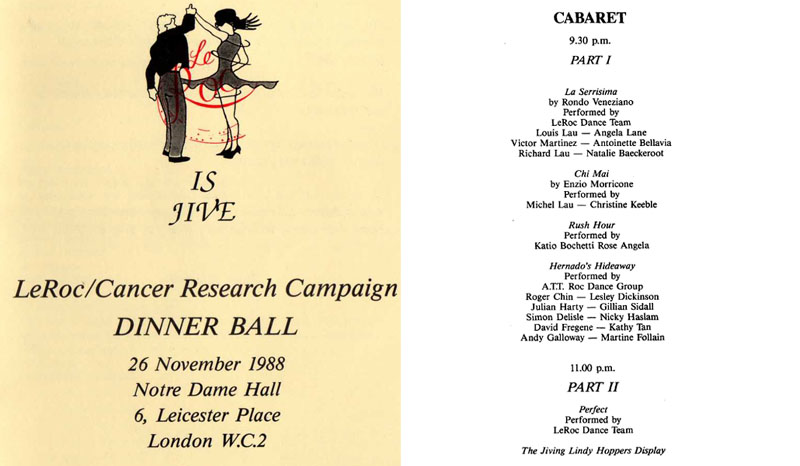
The LeRoc Cabaret Team in 1988.
1990Christine Keeble published the first Modern Jive teaching video tape: "How To Jive", featuring the first public use of the term "modern jive" in the voice-over: "This video is going to teach you modern jive." 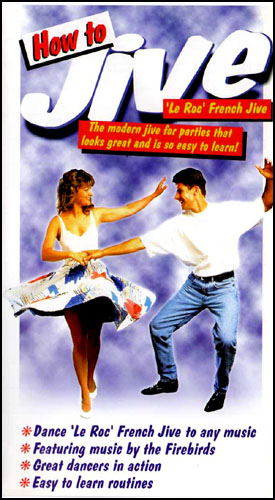
The cover features Christine Keeble and Simon de Lisle.
The picture below features lots of well-known dancers as they were in 1990. 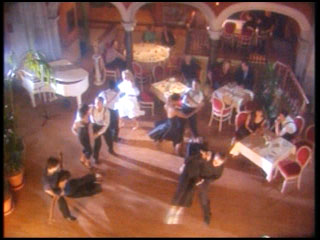
The list of dancers on the DVD is here. 1991Ceroc Enterprises Ltd was founded to manage and coordinate the growth of Ceroc. The first Teacher Training Course took place. Robert Austin founded Ceroc Oxford. Cynthia Farleigh founded Ceroc Anglia (later Ceroc Fusion) in Norwich. These were the first franchises of Ceroc Enterprises Ltd. Nicky Haslam emigrated to Sydney, Australia in January, trademarked the name "Ceroc" in Australia, and began promoting the dance style around Sydney pubs and clubs. David Gotley, having learnt Le Roc from Michel Gay in Bristol, emigrated to Australia and founded what is now Ceroc Club Brisbane. The first class was held in the Dance Hall at the corner of Vulture Street and Stephens Road, South Brisbane on Thursday 7th February 1991. Nicky Haslam ran her first Ceroc Modern Jive classes were at Mosman and Darlinghurst, Sydney in April 1991. In July, Nicky Haslam held the First Australian Ceroc Dance Championships at The Craig Nightclub, Darling Harbour, Sydney. The event was televised on Channel 9's Good Morning programme. In November Nicky Haslam went into partnership with Mark Harding to form Ceroc Pty Ltd in Australia to further develop the Ceroc business. In 1991 a group of independent dance teachers joined together to promote 'Le Roc' as the generic term for this modern jive style. Informal meetings took place to develop new moves and exchange ideas. The group gained interest from established dance bodies, especially the UKA. This group developed into the LeRoc French Jive Federation - now the LeRoc Federation. 1992In Scotland, Frenchman Franck Pauly opened the first Ceroc franchise north of the border. The first night was in Glasgow in August. Robert Austin closed Ceroc Oxford. Robert Austin founded LeJive in Oxford the following week. LeJive became a franchised organisation, growing to nearly 40 venues through the 1990s. Ceroc Bournemouth opened on March 23rd 1992. This grew to become the Ceroc South franchise run by Phil Rees. Phil Roberts ran his first Ceroc class in April at the Harpur Suite in Bedford. Phil's franchise grew and was named Ceroc Central The CTA (Ceroc Teachers Association) was created to ensure continuity in the standard of Ceroc teaching. 1993Marc Almond founded the Ceroc North franchise. The first night was on September 23rd 1993 at Crookes in Sheffield. Colin Shaul (founder of LeRoc Surrey) and Kelly Donaghue (founder of Jive Riot) attended their first Modern Jive class on February 1st 1993 - the first Ceroc South night in Southampton. 1994Ceroc introduced Taxi Dancers to help beginners. Ceroc published the StepCheck cards describing how to do 12 Beginner moves. In Spring, Robert Austin ran the first UK Modern Jive competition - a small event on a Thursday evening. However a full page about it in the Evening Standard caused the Hammersmith Palais to approach Robert Austin about running a competition there. In the Autumn, the first Modern Jive Open Competition took place at the Hammersmith Palais. 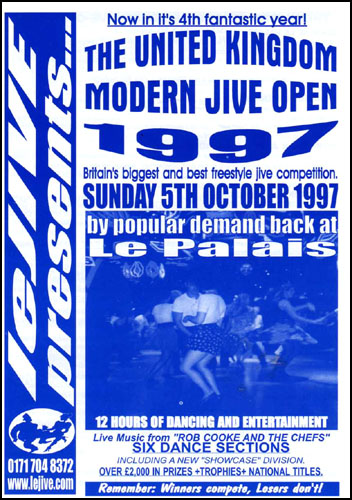
1997 programme - does anyone have an earlier one?
1995Kelly Donaghue founded Jive Riot. Colin Shaul & Christine MacLeod founded LeRoc The Jive In Dance Co. (initially known just as The Jive In) on November 1st 1995 at Park Barn, Guildford. Robert Austin published the LeJive video tape: "LeJive - LeVideo - The Complete Instruction Video". 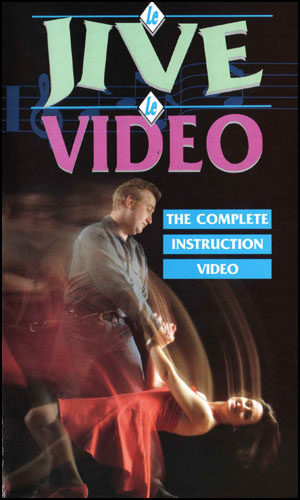
Lynda Gocher published the first "Lynda's List" listing all Modern Jive clubs in the South. 1996Channel 4 ran a half-hour documentary on Ceroc. This was a major breakthrough, getting knowledge of the dance to the largest-ever audience, and gave a real boost to the growth of Ceroc. Following an earlier request from The United Kingdom Alliance of Professional Teachers of Dancing (UKA), the LeRoc French Jive Federation produced the first LeRoc syllabus based upon the content of Christine Keeble’s video. In December Michel Ange Lau published the Original Le Roc Dance Manual. 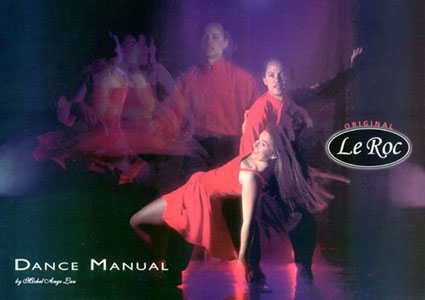
Robert Austin started using " Modern Jive" as a generic name for the dance in his marketing material. Whereas previously people would say they were dancing "a modern jive", this move established " Modern Jive" formally as the generic name of the dance style. The first Dance & Ski holiday took place.
At this point the "Where you can learn LeRoc" sheet listed these clubs:
1997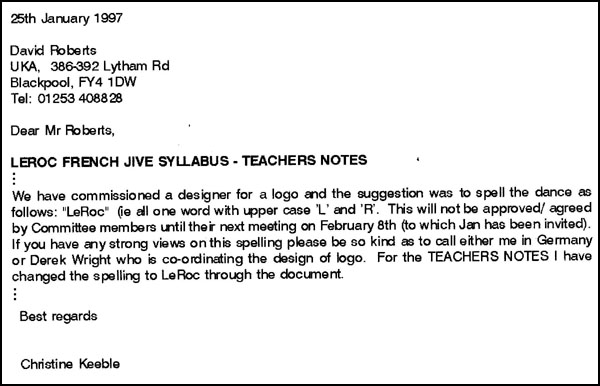
Ever wonder why sometime it is
Le Roc and sometimes
LeRoc.
Here's the answer: It was to make the new logo look better!
Billy Cullen opened LEROC classes in Scotland. The first LEROC class was in Glasgow on September 5th 1997. Franco ran the first Modern Jive Weekender in November 1997 at Butlins in Bognor Regis. Ceroc was launched in Chicago & New York. Unfortunately neither survived long. Robert Austin & Claire Hilliard of LeJive published the book "Learn to Dance Modern Jive!". 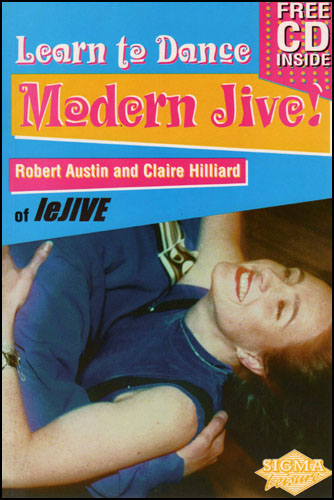
leJive (now with a small "l"!) peaked at 37 listed dance nights in the Christmas 1997 "le Jive’s Freestyle Magazine". 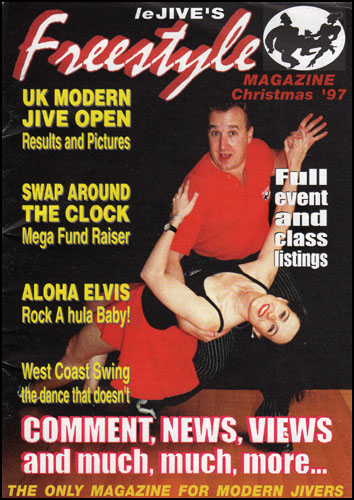
Ceroc North, now covering Sheffield, Leeds, Stockport and more, was closed by Marc Almond at Christmas. Ceroc South, now covering Bournemouth, Southampton, Portsmouth and more, was closed by Phil Rees at Christmas. 1998In January Marc Almond founded Blitz in Sheffield, Leeds, Stockport and more. Marc had seen a dance hall in London with a sign saying "Ballroom Blitz" and decided "Blitz" would make a good name for his new venture. In January Phil Rees founded mo'jive in Bournemouth, Southampton, Portsmouth and more. 1999In January John Sweeney published the first "Central England Jive Dance Listing" listing all the clubs and freestyles in Central England on two sides of A4. This monthly listing developed into modernjive.com. Helen Els (née Buist) (founder of Ceroc South Africa) started as a beginner with Angelique Meyer at the Lorne Street studio in Auckland, NZ. From April 6th 1999 LeRoc (The Jive In Dance Co) split into two companies which are now Colin Shaul's LeRoc Surrey and Christine MacLeod's StrictlyJiving.com. They continued to share the name Le Roc (The Jive In Dance Co). In May the first Ceroc UK Championships took place at The Empire, Leicester Square in London. In June the Australian Ceroc Pty Ltd split into two separate companies: Mark Harding's Ceroc Australia Dance Company and Nicky Haslam's Nu-Ceroc Dance Company, renamed a year later as the Ceroc & Modern Jive Dance Company. 2000A number of former LeJive franchises set up their own independent clubs under the names SwingRoc, Just Jivin', The Jive Club, Jive Riot and Boxmoor Beat. The Ceroc UK National Venue Directory for March 2000 listed 97 dance nights. In June, Nicky Haslam produced the first Australian Ceroc instructional video tape: "Beginner Level 1". 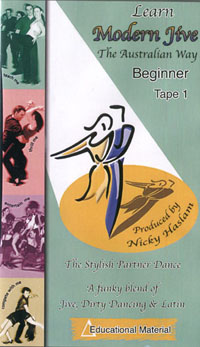
2001There had been no Open competition in 2000. A Chance 2 Dance restarted the concept and moved it to Blackpool where the first of the new UK Open Jive Competitons took place in March 2001. 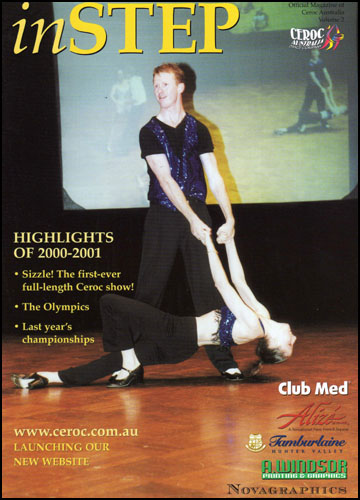
An issue of
Ceroc Australia Dance Company's
2001 magazine.
2002Having generated dozens of new Modern Jive clubs, many still running today under other names, leJive finally closed. The last session was at Oxford on the 28th of February 2002. Robert Austin continued to be heavily involved in dance, focussing on Lindy with clubs like Swing Cats and Daddy-O's. 2003James Cronin sold Ceroc Enterprises Ltd. to Mike Ellard, the main Central London franchisee and longest serving Ceroc teacher. The number of Ceroc venues in the UK reached 100. The first Jive Masters competition was run by Adam Nathanson, founder of Ceroc Metro. The winners were Nicky Haslam & Robert Winter from the Australian Ceroc & Modern Jive Dance Company. 2004Ceroc Dubai opened. 2005Ceroc France opened. In October Helen Els started classes in South Africa. 2007In February Helen Els founded Ceroc Dance South Africa. The South African style evolves to incorporate Sokkie, a local Afrikaans dance. The first South African Ceroc Championships took place in July at the Pretoria Country Club. The first custom-built Modern Jive venue was opened by Mo'jive in Southampton in July 2007. Ceroc Central continued to grow and reached a peak of 21 nights, becoming the largest Ceroc organisation in the world on the basis of the number of dance nights, before it was split up in September and sold to Ceroc UK and Ceroc Enterprises Ltd. UK statistics as at April 2007, as recorded at modernjive.com:
In the UK Ceroc is by far the largest organisation, and, with larger class sizes on average than many of the independents, is estimated to have well over 60% of the market place, with the CTA (Ceroc Teachers Association) continuing to ensure continuity in the standard of Ceroc teaching across the country. The smallest 79 organisations run just one weekly class each! 2008In March, Nicky Haslam sold the Ceroc & Modern Jive Dance Company to her right hand woman, Julie Gunn. At this time, CMJ had ten Sydney venues plus licensed operations in Canberra, Adelaide and Perth. The Ceroc & Modern Jive Dance Company range of Modern Jive instructional DVDs had grown to be the largest in the world (with 16 titles from Beginner, through Intermediate, Close Moves and Advanced to Musicality & Style) produced by and featuring Nicky Haslam and her dance partner since 2000, Robert Winter. 2009On July 1st 2009 Angelique Finucane (née Meyer) sold the Ceroc Dance (New Zealand) to Elly-Ann Pritchard. On October 20th 2009 Ceroc Magyarország opened in Budapest, Hungary, as an official franchise of Ceroc Enterprises Ltd. 2013In November 2013 Julie Gunn expanded the Ceroc & Modern Jive Dance Company by purchasing Ceroc Australia, the business that Mark Harding established and successfully operated for 14 years following the split of the previous business partnership in 1999. Mark Harding and Nicky Haslam continue to be recognised and respected as the originators of Ceroc in Sydney, and they are both pleased to see it now back as one united community under the directorship of Julie Gunn and Ceroc & Modern Jive Dance Company
AcknowledgementsThanks to Roger Chin for the Charles Peguy Centre flyer, the 1986 freestyle flyer and the 1985 photographs. Thanks to Christine Keeble for all the other early Ceroc and LeRoc material. Thanks to Robert Austin for permission to use the leJive material. Thanks to all those who provided material. If you would like a specific acknowledgment here, please let me know. Further reading: |
|
This article and the accompanying images are copyright John Sweeney and the acknowledged sources. All rights reserved. No part of this article or these images may be reprinted, stored in a retrieval system, or transmitted in any form or by any means, electronic, mechanical, photocopying, recording or otherwise, without the prior written permission of John Sweeney. If you would like to contribute to these pages please contact John Sweeney at john@modernjive.com. |